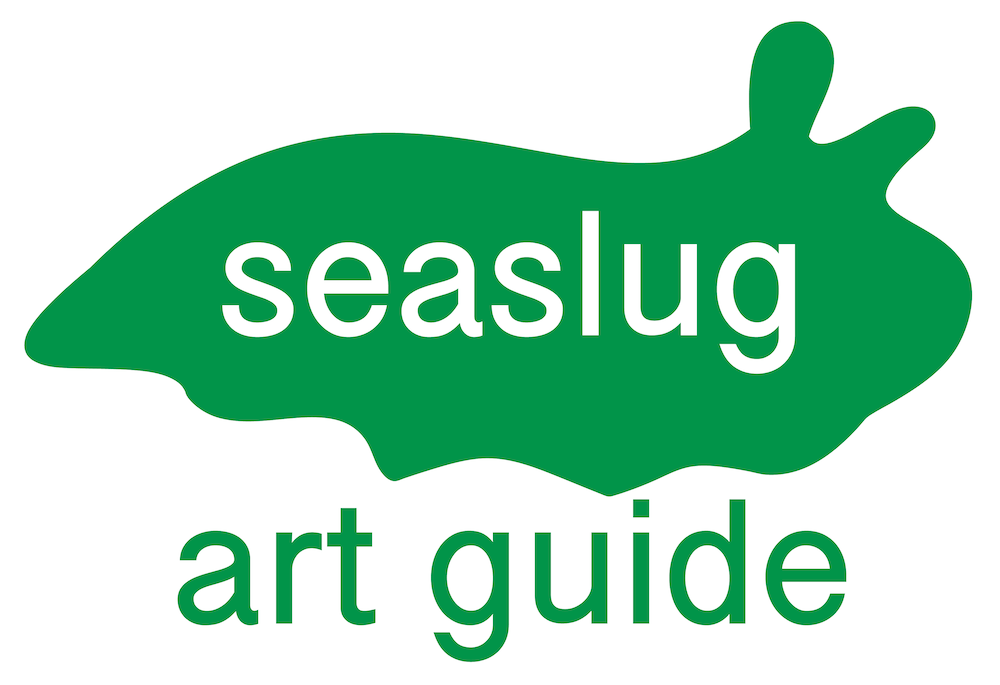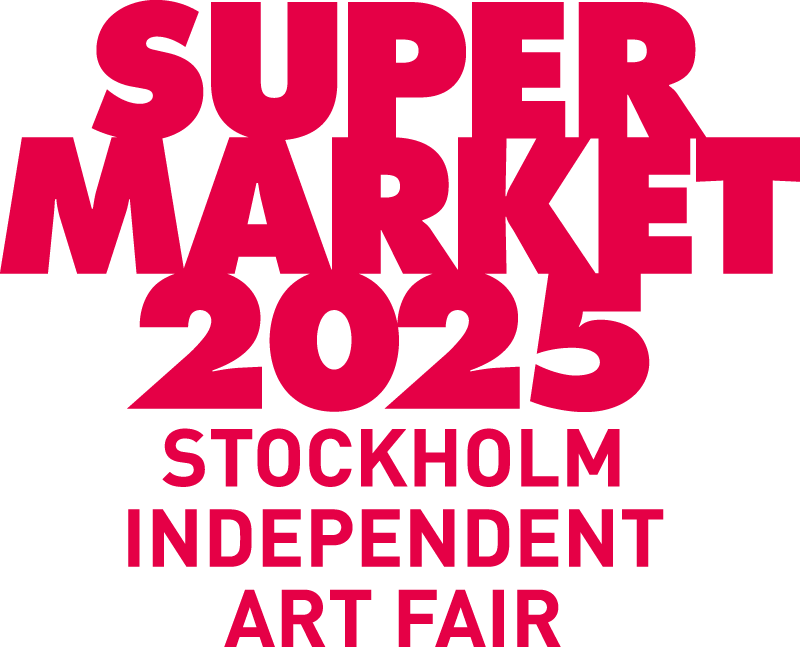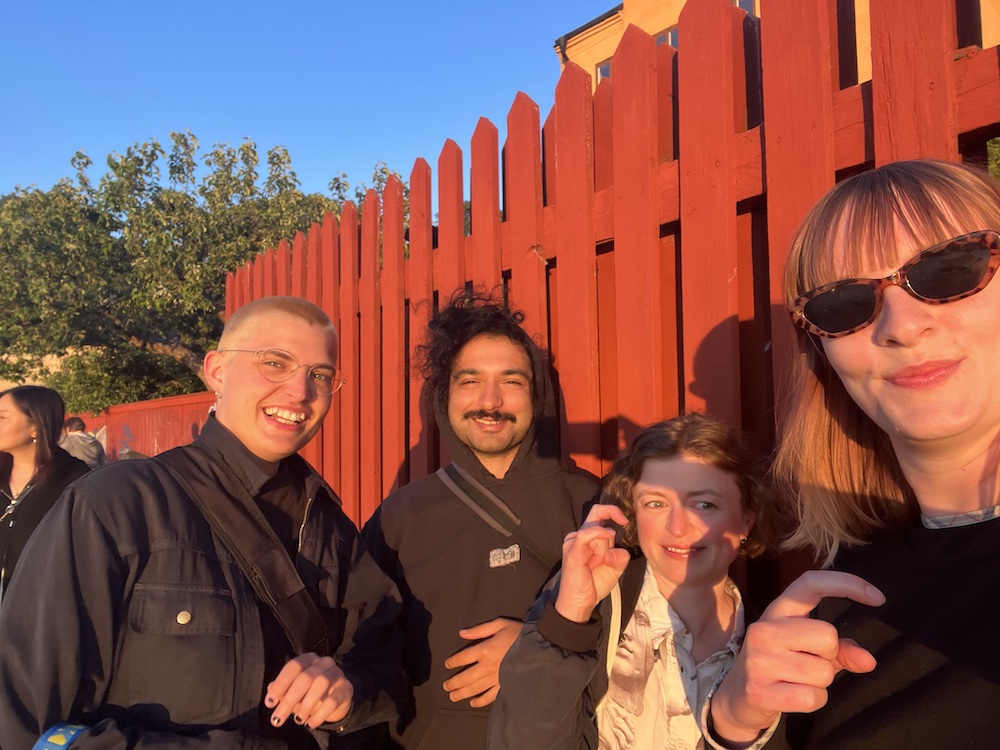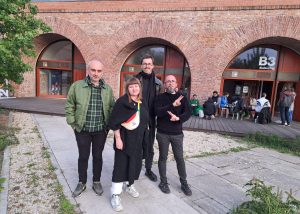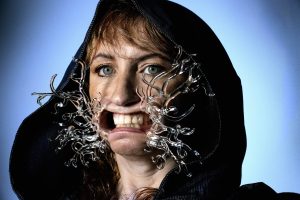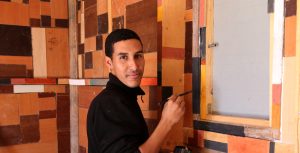For this edition of the magazine we interviewed Seaslug, Stockholm’s youngest and most prolific online (and also a bit offline) art guide with big dreams and a memorable name. How did they start and why, and what are their plans for the future? Founding members of Seaslug Laus Østergaard, Katinka Saarnak and Ali Razzak answer all our questions. Read on to find out what lies in the heart of a seaslug.
– By Alice Máselníková
What does a seaslug dream of?
Seaslug: A seaslug dreams of navigating the waters of Stockholm’s art scene in an easier and more accessible way, preferably with their friends and colleagues. To us, a seaslug is flamboyant, and visually appealing. There is something about the movement of a seaslug that we see as a visual representation of navigating. They’re such mesmerising animals, almost like neon signs, we highly recommend spending some time looking up different kinds of seaslugs.
Another important part is that not only do we consider ourselves Seaslugs but also extend that name to our followers and the people who engage with us. For example, we would consider our Instagram followers as Seaslugs. A seaslug is quite amorphous after all.
Why did you choose the name Seaslug?
Seaslug: What appealed to us with the idea of Seaslug is that Stockholm is a maritime city and associated with water – and not only does the seaslug live in water, but it’s also playful, cute, and beautiful. It was also important that we didn’t want a name that would constrict us. We are a collective and it is about being slugs together. We want to have the possibility to do things in the group without being tied to this calendar or map or guide sort of name. We want to use Seaslug in other collaborative, curatorial, or artistic projects.
Who are the people behind Seaslug?
Ali Razzak: I’m Ali. I work in the data structure side of things. I am a cancer researcher who spends my recreational time coding – often within an art context.
Katinka Saarnak: My name is Katinka, I am a curator and a founding member of Seaslug – we’re all founding members and have formulated the project together. I try to take care of the finances when we have some. Working on keeping it alive and also with social media, among other things.
Laus Østergaard: I’m a curator and an artist, we (Katinka and I) met at the curating art programme at Stockholm University. I’m also a founding member and the chairperson of the board. I contribute to the daily work of social media (as well as Ali).
Fanny Bylund: Artist, regular member, and advisor.
Seaslug: We also have new team members: Lea Gill, who works as a blog editor, and Linda Louise Karlson, a curator who works with our social media.
How are you organised?
Seaslug: We are an association (non-profit) and we each give approximately one day of work every third week.
Do you work with a budget?
Seaslug: Yes, we do, when we have money.
Where does your financing come from?
Seaslug: Besides our blood, sweat and tears – currently nowhere. We are in the process of finding different kinds of funding (while keeping our site and platform free).
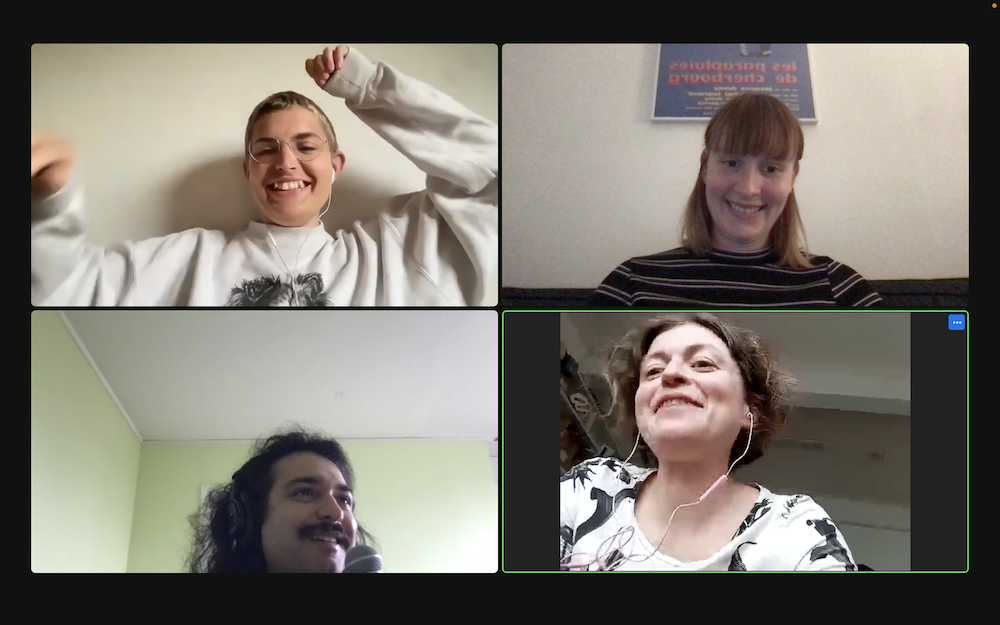
Laus Østergaard, Katinka Saarnak, Ali Razzak, and Fanny Bylund. Image courtesy: Seaslug
You founded Seaslug in October 2021. And launched your website shortly after in March 2022. So it’s been over two years since the origin. How has the project and your ideas of it transformed during this time? Have you reached all the aims you set out to do in your two-year work plan?
Seaslug: Our goals for the project are still the same today as they were initially. We wanted to create a guide for Stockholm’s art scene where everything, especially in terms of exhibitions, was included. And of course, a lot of things have changed since then, but the main goal is still the same: finding ways of bridging Stockholm people with art.
Initially, there was an idea of doing a simple Google calendar idea. Then it was built into the website. We’ve since iterated through different designs for how to communicate the website. It’s been fun learning how to structure the project so that it achieves the goals more precisely.
There has also been growth in other ways: the gallery tours and events we do are really exciting because it’s not necessarily calendar-orientated. It’s like not only are we making the calendar, but we’re also in the calendar too sometimes.We’re inside looking out, rather than outside looking in, we’re not like tourists, effectively. Of course, when we started we were outside looking in, but that has changed.
The project has always been DIY but our expectations have changed over time. The approaches to how we would solve issues have changed. We’ve started talking about sustainability within our project and how we can make it easier for everyone involved. What we’ve learned from working on Seaslug is how important it is, when working volunteer-based, to constantly be in the conversation about how to work together in a way where everyone is still engaged in the project because one recurring concern is feeling anxious about your money job. For us, it’s been important to try to avoid Seaslug becoming a chore. Of course, sometimes there are things that you feel a little bit demotivated about. Managing the balance so we don’t get super burnt out and finding ways of being motivated and thrilled, we’ve somehow managed to walk that line.
Moving into the future. What are the plans and visions for Seaslug in the near and far future? Some of you are moving. How is this, how has this affected your activity? Will Seaslug move on? What are your plans, and visions?
Ali: I think there’s just so much more that I’m excited about in terms of like talking to Glada Sprutan, an artist-run event and atelier space located in Hägersten, talking to Konstforum i Skåne, and collaborating with other districts in Sweden, thinking about how to engage with the community in new ways. Being a base for providing visibility for independent art spaces. Of course, new ideas are always coming up.
Katinka: And then we have always had a vision of receiving funding or finding a way to sustain ourselves financially. We are in the process of planning another party. It’s going to be fun! So yes, Seaslug will live on. But I think at the same time, I also feel like, yes, it has affected our activity in the sense that we don’t get out as much as we used to because some of us can’t easily go to the places that we used to anymore. And that of course affects our presence in the city. But, that being said, it doesn’t mean that Seaslug will not live on. We would also love to be more in touch with our audience, and do more events, and tours, so we can meet all the slugs out there.
Laus: I think the dream would also be that Seaslug wouldn’t be so dependent on us as individuals, but that it would continue as a collective practice kind of project that could move on to new people and that they would hopefully in the future feel free to use the platform, experiment with what Seaslug Artguide and Seaslug is. I think the future is bright.
Ali: That’s a good footnote in terms of sustainability. I guess the big two overarching aspects are the distribution of labour in terms of a finite time, and the resources to compensate for that labour and I guess for the latter point the solution is to aggressively, embarrassingly, and boldly apply for as many grants as we can and see how that turns out.
